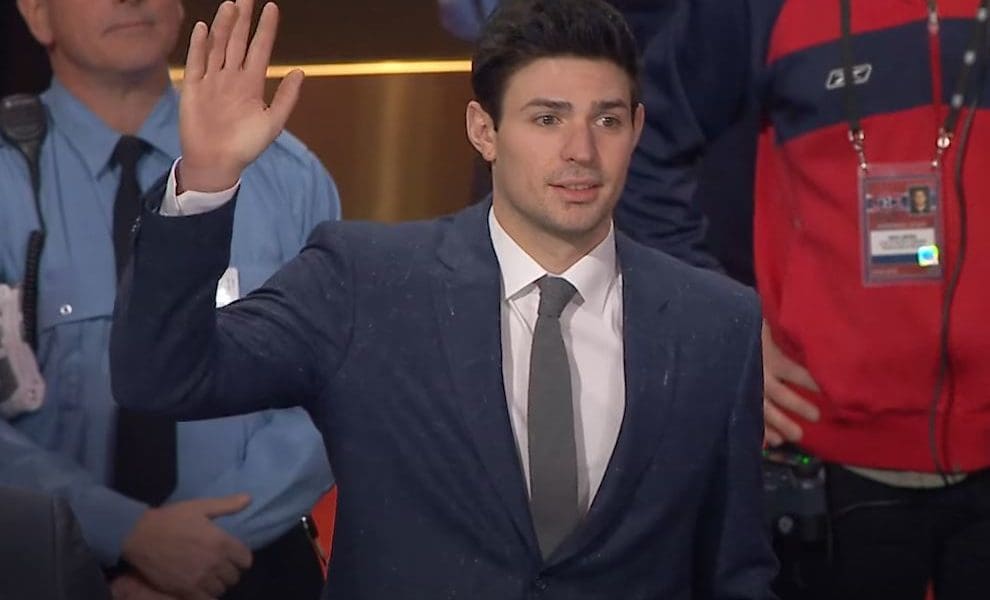Canadiens Analysis
How The Canadiens Are Influenced By Carey Price’s LTIR Contract

Now that the Montreal Canadiens have signed Alex Newhook and Rafael Harvey-Pinard to reasonable contract extensions, they have a relatively healthy amount of salary cap space heading into the 2023-24 season.
As it stands, general manager Kent Hughes will have roughly $8.8 million in available funds, which should be more than enough to absorb at least one bad contract from a team that’s desperately attempting to alleviate their salary cap concerns.
MUST READ: Updated Projected Montreal Canadiens Lineup And Salary Cap Outlook
Given that salary cap space is one of the hottest commodities in the NHL, Hughes and Co. should have a long line of suitors when it comes to trade offers that involve trade assets heading back to the Canadiens alongside an expiring contract, much like the Calgary Flames did when they traded Sean Monahan and a first-round pick to the Habs in return for future considerations.
But the nearly $9 million in cap space the team will have to work with isn’t as appealing as one would expect.
Non-Accrued Funds
The main reason the Canadiens have available salary cap space has to do with the $10.5 million in salary relief the team will receive once they put Carey Price on the long-term injured reserve.
The LTIR funds will allow the Canadiens to exceed the salary cap, but they are not added funds, in the sense that the Canadiens will have an extra $10.5 million in salary cap expenditures.
They simply provide relief once a team has reached the upper limit of the salary cap.
It’s a very complicated subject, and I encourage everyone to visit the LTIR FAQ provided by CapFriendly, but simply put, the relief funds will not accrue throughout the season.
For example, if a team starts the season with $5 million in salary cap space, that number will grow throughout the season. However, for the Canadiens, the number will remain fixed, as LTIR funds do not accrue.
Finding a New Home
As it stands, the Canadiens will have a rather hard time finding a new home for Price’s contract, at least compared to some of the other dead contracts that have been moved around in the NHL.
Of course, as per usual, the team is likely to look toward the Arizona Coyotes, but the manner in which Price’s contract is structured will make things rather difficult for Hughes.
Price’s contract carries an annual average value of $10.5 million, but a significant portion of the deal involves hefty signing bonuses every year.
For example, in 2023-24 Price’s contract has a $10.5 million cap hit, but the Canadiens had to pay him $6.5 million on July 1 in the form of a signing bonus.
That amount must be paid in full and in cash, which is something a team like the Canadiens has no issue doing due to their rather deep pockets, but isn’t necessarily feasible for a team like the Coyotes that is undergoing endless financial stress.
From now to the end of the season, the Canadiens will owe Price $2 million, paid in the regularly scheduled installments NHL players receive throughout the year.
But on July 1, 2024, Price is owed another significant signing bonus, to the tune of $5.5 million in cash. The same thing will occur on July 1, 2025.
That means if the Canadiens want to trade Price to Arizona today, the Coyotes will have to pay $11 million in signing bonuses on top of the $6 million he’ll be owed in regular salary.
Seeing as the Coyotes are in a tenuous financial situation, to say the least, for now, the odds that Price’s contract ends up being traded to the desert are very low, which means the Canadiens are stuck in a salary cap situation that will not improve throughout the year due to LTIR funds not accruing.
All Montreal Canadiens salary cap information via CapFriendly.

